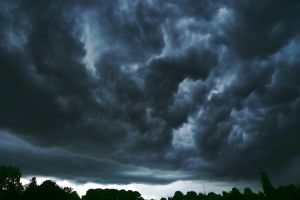
Last month your Charleston accident lawyers at Howell Law posted an entry covering the highly publicized stage collapse at the Indiana State Fair. In that post it was presupposed that claims might be filed on behalf of those killed and seriously injured in the accident. As it turns out, two weeks after the stage collapse a number of personal injury and wrongful death lawsuits have been filed against concert organizers, claiming gross negligence for failing to warn patrons of an oncoming storm.
Their claim, citing the law negligence, is based on the forseeability aspect of proximate cause and is established by proof that the actor, or in this case fair organizers, should have reasonably foreseen that their negligent act would imperil others. Plaintiffs allege that fair organizers had the opportunity to warn concert patrons of a dangerous, oncoming storm and that this catastrophe could have been avoided.
To reiterate a point of interest noted by your Charleston attorneys in the last entry, at the time of the State Fair accident there was another large music event in close proximity that successfully evacuated 6,700 people before the storm reached the site. Thus, it could be said that promoters and organizers of the State Fair breached the general standard of care by not exercising due care and caution for the safety of the concertgoers by not evacuating the fairgrounds.
One suit, filed on behalf of the estate of a 23-year-old woman and her parents, names Mid-America Sound Corp., Lucan Entertainment Group LLC, Live 630 Group, Live Nation Touring, and ESG Security as defendants. In the event that more than one of these entities are found to have been negligent, tort law must find a way to allocate redress owed to the plaintiff for their loss.
Originally, the plaintiff had the legal responsibility to which of several actors was responsible for the damage and to what extent each actor played in causing that damage, or all recovery would be denied. Gradually, the doctrine of joint and several liability allowed an easier method for plaintiffs to obtain full compensation in such circumstances by making all defendants liable to the plaintiff for the full amount of the injury. In effect, allowing the plaintiff to select which defendant to pursue in court, which meant that often times the pursued defendant would later file suit against those defendants not targeted in hopes of alleviating the burden of owed damages. Modern tort law now allows loss shifting and the spread of redress among tortfeasors, or negligent parties, by asserting a certain percentage of responsibly to each defendant.
One Indianapolis law firm seeking class-action status for its suit against the State of Indiana and companies involved ran into some trouble when filing the suit. According to the attorney general, the firm failed to follow the legal process of suing in Indiana by filing the suit the same day it notified the attorney general’s office of the suit. Under Indiana law, when suits are filed against the state, there has to be 90 days for the state to review a tort claim before the suit can be filed.
Nearly two weeks after the accident, some concertgoers were still hospitalized from devastating injuries that resulted from the stage collapse. In one particularly tragic incident, a family is hoping their 17-year-old relative will be able to walk again. He suffered a serious spinal cord injury that has left him without feelings in his legs. Others still hospitalized incurred serious head injuries and multiple fractures.